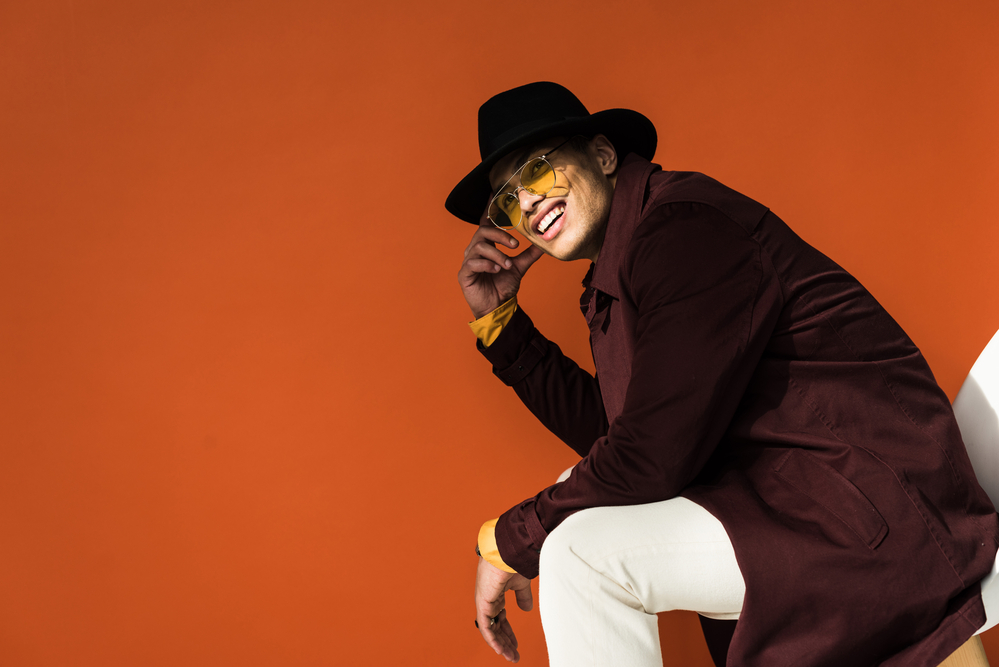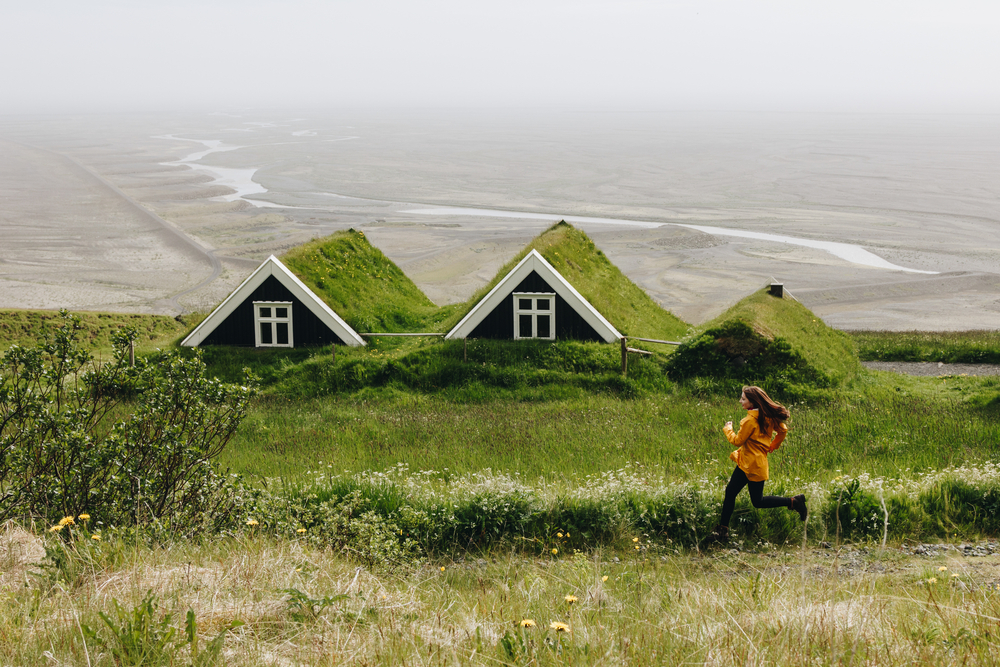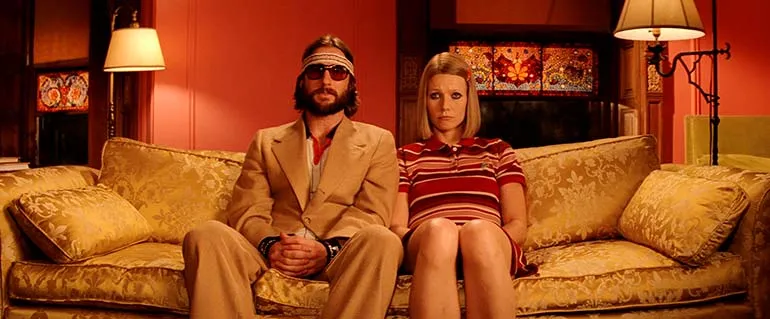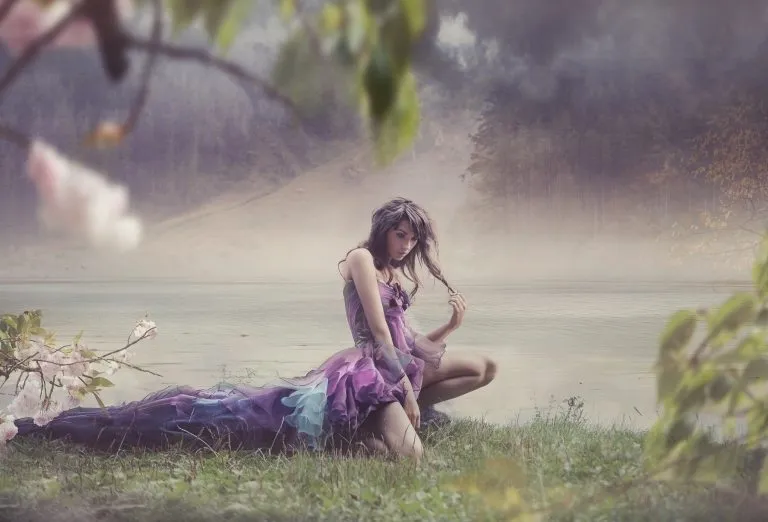Color Psychology Explained: How Hues Can Evoke Emotions and Influence Decisions
Have you ever thought about why people consider blue the color of sadness? Or why renowned fast-food chains use a lot of red? It’s all about color psychology. It’s been known for a long time that certain hues can trigger real physiological responses, influencing our state of mind. Colors and emotions are closely intertwined.
Designers, marketers, and other creative minds have been harnessing this knowledge for years when crafting products. Want to discover their secrets? Read this article to explore more about colors, their meanings, and emotions.
![]()
Color psychology definition
Color psychology is an applied science that explores how certain hues can influence human consciousness and behavior. It’s believed that Swiss psychiatrist Carl Jung laid the foundation for this discipline, suggesting that colors resonate with the deepest layers of personality—the collective unconscious.
Although the study of color psychology is relatively modern, ancient Egyptians experimented with hues to treat illnesses; they painted their rooms in specific shades and utilized crystals to filter sunlight.
Renowned German poet and playwright Johann Wolfgang von Goethe also recognized the impact of colors on the human psyche. In 1810, he published “Theory of Colors,” asserting that yellow brings tranquility, while blue evokes a blend of emotions, from excitement to serenity.
While some colors are culturally nuanced—black symbolizing mourning in the West and joy in the East—others are considered universal. For example, red signifies danger, while green conveys safety. That’s why these colors are featured prominently in traffic signals.
Hence, the psychology of color plays a significant role in marketing. By leveraging specific hues, experts in this field can effectively shape the perception of products or services among the masses.
Today, the psychological effects of color on human behavior are explored by numerous disciplines, including neuroscience, sociology, and environmental studies.
How do colors affect your mood and emotions?
The psychological effect of color on one’s mood can vary depending on the shade. It’s believed that soft contrasts and muted tones evoke a sense of calmness, and vice versa. For example, light pastel blues are often associated with relaxation, but when saturated, they can convey energy and determination.
Certain colors can even influence people’s physiological responses. The color red is a great example. It’s known to stimulate appetite by increasing heart rate and blood pressure, thereby affecting metabolic functions. That’s why major fast-food chains like McDonald’s and Burger King incorporate red into their advertising and logos.
One more interesting study found how colors are associated with emotions:
- Red is associated with love by 68% of respondents.
- Yellow brings joy to mind for 52%.
- Black is linked to sadness by 51%.
- Pink is also related to love for 50%.
- Orange is connected with joy for 44%.
- White is associated with relief by 43%.
- Green brings contentment to mind for 39%.
- Brown is linked with disgust by 36%.
- Blue is tied to relief for 35%.
- Purple is associated with pleasure by 25%.
Nonetheless, emotions represented by colors may depend on personal experience.
How can colors influence performance?
If you’re planning workspaces and aiming to make them more conducive to productive work, the best solution is to select your color palette carefully. However, it all depends on the effect you want to achieve.
Here’s what scientific research says about colors and feelings:
- Blue and green have calming effects. This is particularly important in workplaces where employees need to stay focused on tasks.
- Red and yellow stimulate the nervous system. In some cases, this is an excellent color choice if you need to generate a lot of creative ideas. These colors can also be used in gyms to motivate people to achieve their goals.
- Orange stimulates creative thinking. This can be utilized in meeting rooms, especially when conducting brainstorming sessions there.
What is the impact of color on consumer purchases and conversion rates?
One of the most fundamental things designers should know is color theory psychology. This is because specific shades have a significant impact on purchasing decisions. Research suggests that people form subconscious judgments about a person, environment, or product within the first 90 seconds of seeing them. Between 62% and 90% of these assessments are based solely on color.
For instance, in digital design, it’s not recommended to use a lot of red. Firstly, it strains the eyes, prompting users to close your website faster. Furthermore, colors can be used to draw attention. For example, on websites, call-to-action buttons are usually colored in contrasting hues. This is done to make it easier for users to notice your message.
The psychology of colors is also widely utilized in the interface of mobile applications. Typically, buttons for preferred actions are colored green, while others are gray. This is necessary for users to subconsciously make the “right” choice.
What emotions do colors represent?
Colors can trigger a wide range of emotions, from sadness to upliftment. Let’s explore some of the most common ones.
Red
Emotions: excitement, energy, passion, attention
Used to: stimulate, create urgency, draw attention, and warn about danger
Industries: entertainment, food, sport.
Orange
Emotions: optimism, creativity, fun.
Used to: stimulate and express freedom.
Industries: entertainment, art.
Pink
Emotions: compassion, love, admiration.
Used to: deliver energy, increase pulse, fascinate
Industries: women’s products, beauty, fashion
Brown
Emotions: stability, honesty, comfort, naturalness
Used to: stabilize, deliver warmth
Industries: agriculture, construction, transportation, legal
The psychological aspect of colors in sales and marketing
Marketers employ multiple tools to inform and persuade consumers, e.g., text, visuals, websites, advertising banners, etc. However, at the core of all of this are the colors and moods they convey.
Think of the visual identity of Apple. This brand favors the color white, which is not by chance. Initially associated with purity, it signifies simplicity and sophistication in contemporary communications. This resonates perfectly with Apple’s commitment to minimalistic design in its products. Furthermore, the company complements the white hue with silver and metallic tones to underscore its premium quality.
Another example is IKEA. While the brand’s logo features two colors—yellow and blue—emphasis is often on the former. This is because yellow is associated with optimism, creativity, and affordability. Thus, IKEA aims to highlight that its solutions complement home interiors and come at a low-cost price.
Below is a more detailed color emotion guide that can help you come up with your unique vision for brand communications.
Green color psychology
When looking at vibrant shades of green, you likely experience feelings of tranquility and assurance. This hue often evokes associations with nature, health, wealth, and prosperity.
Green proves to be a great option for companies seeking to highlight their organic and environmentally friendly ethos. Financial institutions also commonly favor this shade. Furthermore, green’s association with growth and progress makes it a preferred choice for some technology companies when developing their logos and brand materials.
Companies that use green in their logos: Starbucks, Android, Animal Planet, John Deere, Whole Foods Market, and Land Rover
Blue color psychology
Being the color of the sky and the ocean, blue carries a calming effect and a sense of security. Moreover, it’s associated with logical thinking, which is particularly valuable for companies offering complex and comprehensive products.
A blue logo signals that your brand is professional, rational, and approachable. It fosters a sense of security and trust in your company. However, it might not be the optimal choice for businesses in the food industry, as it tends to suppress appetite.
Companies that use blue in their logos: Facebook, Twitter, Lowe’s, Dell, Oral-B, Ford, American Express, Samsung, and Intel.
Orange color psychology
Orange is linked with playfulness and enthusiasm. It’s believed to spark brain activity, but its attention-grabbing nature can appear bold or aggressive. This mix of friendliness and mental stimulation makes the color effective for encouraging consumers to take action.
An orange logo suggests that your company is approachable and cheerful. It’s a great fit for brands looking to convey a laid-back vibe without seeming overly formal, while still projecting confidence.
Companies that use orange in their logos: Amazon, Fanta, Firefox, T-Mobile, PayPal, Nickelodeon, SoundCloud, Home Depot, and Hootsuite.
Purple color psychology
Earlier, acquiring purple pigment for clothing was challenging; one gram of this dye was equivalent to one gram of gold. This level of luxury was reserved for kings or noble elites, hence why this color is strongly associated with royal status. Purple conveys notions of wealth and richness. It also embodies fantasy, mystery, and magic, evoking feelings of wisdom and imagination. Beauty brands often opt for shades of purple in their logos, especially those specializing in anti-aging products.
A purple logo suggests that your brand embodies luxury and creativity. It appeals to brands seeking to project an image of affluence or wisdom, as well as deliver a sense of enchantment or intrigue.
Companies that use purple in their logos: Cadbury, Twitch, FedEx, Yahoo!, Hallmark, L’Oreal, Asus, Crown Royal, and Etsy.
Red color psychology
Red is one of the most emotional colors, evoking strong feelings such as passion, energy, and aggression. It’s the color for powerful brands that aren’t afraid to assert themselves and strive for market dominance. Moreover, red is one of the most popular colors in user interfaces; it’s used as an accent shade to alert users to important details.
Companies that use red in their logos: Target, Coca-Cola, McDonald’s, Toyota, Netflix, Adobe, KFC, and YouTube.
Yellow color psychology
Yellow is often associated with happiness and optimism. It’s considered cheerful and warm, encouraging communication. However, yellow is also linked to caution, as seen on road signs and traffic lights. Its bright shades can even strain the eyes.
A yellow logo suggests that your company is positive and friendly. It’s great for grabbing the attention of passersby and conveying a sense of happiness. But be sure to opt for less saturated shades to provide comfort for viewers’ eyes.
Companies that use yellow in their logos: McDonald’s, Shell, Snapchat, IKEA, UPS, Hertz, Nikon, and CAT
Pink color psychology
Pink is often associated with femininity and commonly used in logos for brands targeting women. It’s also linked with sweetness, frequently appearing in marketing materials for confectionery like ice cream and donuts. Additionally, pink is viewed as a playful color, which is why it’s fun and whimsy.
If your logo is pink, it indicates that your target audience is primarily women. It conveys a feminine image, appealing to consumers who resonate with this aesthetic. If you sell food products, they’re likely to be sweet and indulgent. In other industries, a pink logo suggests that your company is vibrant and playful.
Companies that use pink in their logos: Barbie, Victoria’s Secret, Baskin-Robbins, Mary Kay, and LG.
White color psychology
White is often perceived as a symbol of purity, cleanliness, and simplicity. It evokes a sense of clarity, freshness, and serenity. In the absence of color, white can represent a blank canvas, signifying new beginnings, innocence, and openness to possibilities.
White is commonly used in logos to convey a sense of minimalism, sophistication, and refinement. It can also create a feeling of spaciousness and lightness. This hue can be found in almost every logo because it creates white space and helps emblems stand out.
Companies that use white in their logos: Apple, Nike, Toyota, Adobe, Dropbox, and Unilever.
Black color psychology
In marketing communications, black is perceived as a serious, no-nonsense color, often associated with sophistication and elegance. Despite its simplicity, it’s commonly utilized for luxury products due to its inherent sense of glamour and exclusivity. Black can also convey mystery and allure.
If your company opts for a black logo, it likely prefers elegance over drawing attention. You strive to portray your brand as well-established, with a strong reputation for sophistication. Flashy colors aren’t deemed necessary to convey your message.
Companies that use black in their logos: Nike, Apple, Chanel, Adidas, Hugo Boss, Prada, Tiffany & Co, Gucci, and Mercedes-Benz
Gray color psychology
In marketing color psychology, gray signifies neutrality and balance. It can evoke feelings of calmness and subtlety, influencing human behavior. Many businesses incorporate gray into their branding and design to convey professionalism and reliability. Furthermore, gray serves as a neutral backdrop in design, enabling other colors to stand out and capture attention without overpowering the viewer.
This tone is a great option for companies aiming to highlight their stability and strong market presence. Handmade businesses may also consider using gray to convey the warmth with which their products are crafted.
Companies that use gray in their logos: Honda, Wikipedia, Audi, Lexus, WordPress, Nissan.
Brown color psychology
Color psychology suggests that brown brings feelings of comfort and security, which is why it’s commonly used in marketing for natural or food-related items. Brown is also frequently seen in logos and banner images, where its earthy tones convey reliability and trustworthiness.
Brown is also suitable for designing logos for companies that specialize in home decor or gardening supplies. This is because the color aligns well with natural materials and earthy aesthetics.
Companies that use brown in their logos: Hershey, Edy’s, Gloria Jeans, and J.P. Morgan.
How to select colors for your brand communications
If you’re on your way to developing a visual identity, consider the power of colors to impact consumer perception. Below are some helpful tips to guide you in choosing the perfect hue for your brand.
#1. Define your brand’s mission
Companies within the same industry often position themselves differently; some prioritize professionalism, while others emphasize eco-friendliness. If you’re unsure about your brand’s mission, consider asking your consumers what they value most about your company. Then, create mind maps to explore common associations and align them with the above mentioned color psychology guide.
For example, Burger King strategically incorporates orange and red colors into their brand communications. This aligns with the company’s reputation for aggressive marketing campaigns. They frequently engage in “burger wars” with their primary competitor, McDonald’s, which is evident in their banners and advertisements.
#2. Trust your customers’ preferences
Creating brand communications starts with marketing analysis. At this stage, it’s crucial to grasp what matters to your target audience, their preferences, and life aspirations. This insight will aid in outlining the qualities your brand should embody.
For example, McDonald’s encountered a challenge where their products were linked to unhealthy eating habits. In 2009, they opted to switch the signature red background of their logo to green in several European countries. This strategic move aimed to alter perceptions, steering them towards health-consciousness and eco-friendliness.
#3. Take your markets into account
Color perception differs between Eastern and Western cultures. For example, in India, red symbolizes joy and purity, while in many African countries, it signifies aggression and death. Moreover, yellow is seen as the color of mourning among Chinese Buddhists. InformationIsBeautiful created an insightful infographic with detailed insights into the cultural significance of colors.
Before deciding on the colors for your logo and brand communications, consider the markets you intend to reach. Remember that even white and black aren’t universally interpreted.
#4. Stick to using a maximum of three colors
Having too many colors can strain viewers’ eyes and add unnecessary visual complexity, which can detract from the effectiveness of your logo. A prime example of this is Slack. Previously, their logo featured a staggering 11 different colors. It was so intricate that errors in perspective and color were common, negatively impacting the brand’s image. In 2019, Slack underwent a rebranding focused on simplicity. Although their current logo still incorporates four colors, the previous example highlights the importance of keeping things simple.
Furthermore, ensure that the colors in your palette complement each other. To select the right options, you can rely on the color wheel theory, which offers several approaches:
- Complementary. Choose two hues that are opposite each other on the color wheel, like red and green, or yellow and blue.
- Analogous. Opt for three shades that are adjacent to each other on the color wheel, such as blue, green, and teal, or purple, red, and orange.
- Triadic. Select three hues that form a triangle on the color wheel, such as green, purple, and orange.
- Split complementary. Utilize a pair of hues positioned diametrically across the color wheel, ensuring each shade lies adjacent to the other’s complementary color. For example, if violet is your starting color, its complementary hue is yellow. However, their split complementary colors are green and orange.
- Tetradic. Consider a color scheme involving four colors that together form a rectangle on the color wheel, like red, orange, blue, and green.
If navigating color schemes feels hard for you, turn to online tools like those from Sessions College or Figma. They make the color blending process easy: just input your base color in CMYK or RGB format, select the matching principle, and receive colors that work well together.
#5. Consider the norms in your industry
People already have strong color associations with different sectors, which can simplify things for your company. Sometimes, it’s easier to align with what’s already familiar in society.
Towergate Insurance analyzed logos from over 500 well-known companies and found interesting patterns. Below are the most popular colors by industry:
- Restaurants: red, green, blue.
- Airlines: blue, red, yellow.
- Telecommunications: light blue, black, gray.
- Apparel and accessories: black, red, orange.
- Automotive: gray, red, blue.
- Home appliances: blue, orange, red, green.
- Pharmaceuticals: blue, orange, green.
- Chemicals: green, red, blue.
- Courier services: blue, red, orange.
If you’re unsure about which color to choose, opt for one that’s already closely associated with your industry.
#6. Choose your signature hues
To make a statement, you don’t have to opt for a multitude of colors in your brand communication. Take a cue from Starbucks. While their primary color is dark green, they play with various shades of it across their website, marketing materials, and social media, ranging from muted tones to subtle blues. Interestingly, Starbucks’ visual materials once featured an earthy brown shade too, but as they moved towards minimalism, the brand phased it out.
This approach can help you craft gradient solutions that have remained popular in graphic and web design for years.
To wrap up
Color psychology is a science that everyone should be familiar with when working with consumers. By selecting the right colors and combinations, you can create solutions that truly resonate with buyers. Moreover, color psychology in marketing can serve as your guide during the development of brand materials and communication strategies. Moreover, this knowledge can also help in other areas—creativity, workspace arrangement, and well-being. Colors and the emotions they evoke are powerful levers for influencing human consciousness.
Other articles you might find interesting
Exploring the Charm of Pastel Colors: Definitions, Color Theory and Design Tips
How to Design with Gold: Its Meaning, Symbolism, and Complementary Colors
White Space in Design: Using Negative Space to Create Harmony in Your Visuals




















